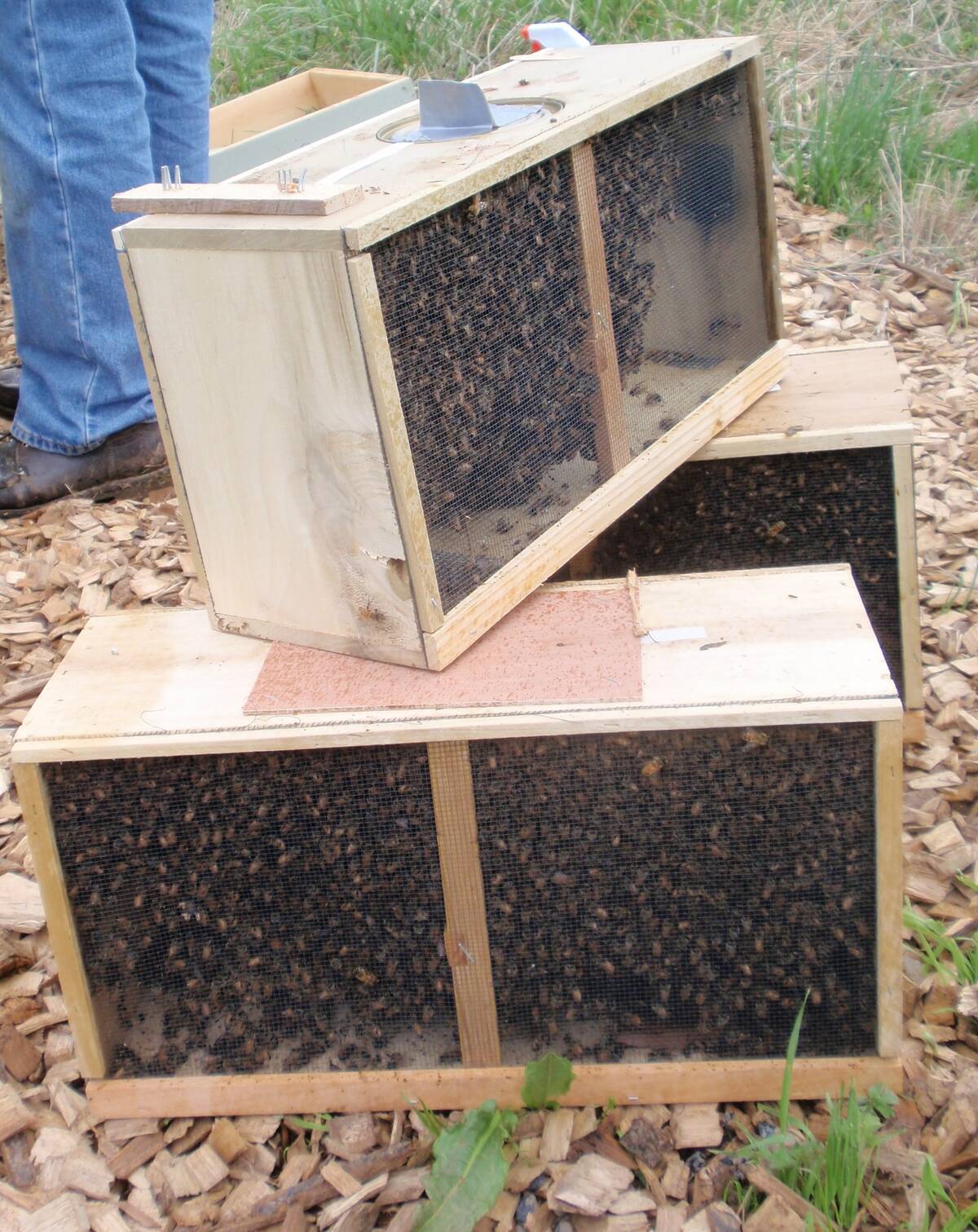There’s grief, anger, but also relief mixed into the range of emotions following a recent British Columbia court ruling that meant a death sentence for 400 ostriches.
In a 137-page ruling, the Federal Court justice hearing the case made a heart-wrenching decision, while expressing sympathy for a family devastated by the pending destruction of these birds under order from the Canadian Food Inspection Agency.
Their owners, Universal Ostrich Farm near Edgewood, B.C., have vigorously campaigned to block last December’s directive to cull the whole flock after tests confirmed 69 sick and dying birds were infected with highly pathogenic H5N1 avian influenza.
Read Also

Canadian beekeepers call for regulatory accountability
Beekeepers say the Canadian Food Inspection Agency should restore packaged U.S. bee shipments, claiming the agency isn’t following evidence.
They’ve protested in the courts, launched a website to rally support and donations for their legal fund and appealed to politicians. Supporters were reportedly surrounding the farm as a human shield following the court decision. CFIA had at one point blocked one of its social media feeds due to a flood of abusive comments.
However, attempts to portray this situation as an attack on farmers or a case of government overreach fall flat in the face of the potential repercussions for the rest of the country’s farmers and for public health if these protests prevail.
Based on what we know today about the creeping invasion of avian influenza — through wild and domestic bird populations, mammals and humans — euthanizing infected flocks is the best defence against the virus’s continued spread.
Canadian procedures follow international guidelines set by the World Organization of Animal Health, which lessens the risk of other countries closing their borders to Canadian farm products.
Since it first surfaced in 2021, highly pathogenic avian influenza hit 527 Canadian farms, ranging from commercial poultry operations to small backyard flocks. It has resulted in the illness-related deaths or euthanasia of more than 14.5 million birds. Two new cases were confirmed this month in western Manitoba poultry barns.

So far, there’s been only one confirmed human infection in Canada, a British Columbia teenager who became critically ill last year but has since fully recovered. But the risk of human infection grows as the virus becomes more prevalent and continues to evolve.
It hasn’t surfaced in Canadian dairy cows or milk supply, unlike in the U.S. where it has affected dairy herds, workers, and barn cats and shown up in unpasteurized milk sold in grocery stores. (The sale of raw milk is prohibited in Canada.)
Some, including U.S. Health Secretary Robert F. Kennedy Jr., have advocated for letting the disease run its course in U.S. poultry barns as a means of identifying birds that might be immune. His colleague, U.S. agriculture secretary Brooke Rollins has also voiced support for the idea.
The scientific community has widely condemned the idea, saying it is not only inhumane to allow it to spread uncontrolled, it provides the virus with millions more opportunities to replicate and evolve.
Canada’s “Stamping-Out Policy” hasn’t eradicated the disease. That’s virtually impossible to do because of its prevalence in the wild bird population. But the policy is credited with slowing its spread. By focusing on domestic populations, it lessens human and mammal exposure.
Justice Russel Zinn quite rightly refused to weigh in on evidence challenging the scientific validity of the practice of culling exposed birds saying that was beyond the purview of the case. Choosing between opposing scientific opinions is for policymakers, not the courts, he said.
The judge also rejected claims that the ostrich flock should be spared because it contains “rare and valuable poultry genetics,” and that some of the birds have developed immunity because they were exposed but didn’t die.
The court limited its review to whether the CFIA’s actions are a reasonable interpretation of the legislation and policies it is charged with upholding and whether its decisions were consistent with the knowledge officials had at the time. It concluded they are.
He accepted testimony that said, “the Stamping-Out Policy facilitates a faster return to disease-free status according to relevant international treaty, protects Canada’s export markets through negotiated trade agreements, and supports co-ordinated global efforts to reduce public health risks from this zoonotic disease.”
Federal authorities follow similar eradication protocols for numerous zoonotic livestock diseases that threaten the national herd health, public health and which have implications for trade. Officials are currently dealing with an outbreak of bovine tuberculosis in a Saskatchewan beef cattle herd.
Exemptions are rare and the bar for considering them is high. Court documents cited a case where one turkey barn on a multi-barn site was exempted from a cull because it contained no disease and was well-enough separated from the others.
The operators at Universal Ostrich were unable to demonstrate they were providing enough separation between birds that weren’t sick and the ones that were, or that they could implement the biosecurity necessary to protect public health.
Even though owners are compensated financially for their losses, there’s profound mental anguish associated with culling a herd built over successive generations, and with the extra work involved with inspections, testing and follow-up sanitation. It’s a life-changing loss.
No one feels good about the court’s decision. Disease control is a messy business. But leaving it uncontrolled is messier still. Making an exception just this once — no matter how emotional the appeal — would set a dangerous precedent.
















